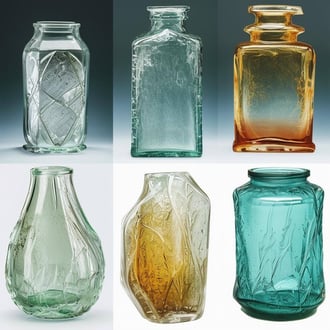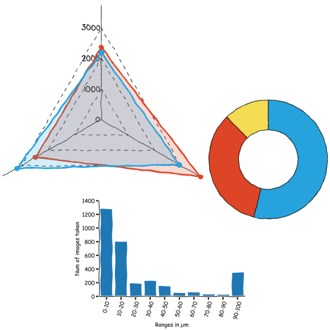Discover the capabilities of WaveMode AFM in characterizing bottlebrush polymers with unprecedented detail and speed, ...

The ultimate tool for nanoscale research from biological molecules to advanced new materials.
The versatile mid-range research AFM that grows with your demands in modes and accessories.
A compact affordable research AFM that is astoundingly easy to use, with more than 30 modes and options.
Fastest reliable sub-Angstrom surface roughness metrology.
Bringing the power of DriveAFM to a wafer metrology system purpose-built for the requirements of the semiconductor industry.
Measure roughness and other material properties of heavy and large samples up to 300 mm and 45 kg.
For unique requirements, we will design a bespoke AFM solution, leveraging our decades of engineering expertise.
Slide an AFM onto your upright optical microscope turret for a leap in resolution.
One of the smallest ever AFMs, created for integration into custom stages or existing setups.
A flexibly mountable research-grade scan head for integration into custom stages or existing set ups.
What is atomic force microscopy (AFM)? How does AFM work? What AFM modes do I really need? How do I get started with AFM?
Learn how AFM works with cantilever/tip assembly interacting with the sample. Explore CleanDrive technology, calibration methods, and feedback principles for precise nanoscale imaging.
An overview of common AFM modes. To learn about each mode in more detail and see application, view the full article.
We regularly publish detailed reviews providing practical guidance and theoretical background on various AFM applications.
Read detailed technical descriptions about selected AFM techniques and learn how to perform specific measurements on Nanosurf instruments.
A library of links to research papers in which Nanosurf instruments were used.
Learn AFM from our library of recorded webinars, covering different measurement techniques, modes, and areas of application.
Short video clips explaining how to perform different operations on Nanosurf instruments.
Watch a product demonstration to learn about the capabilities of our AFMs.
Short videos of our AFMs.
Browse news articles, press releases and a variety of other articles all around Nanosurf
Browse Héctor Corte-Léon's weekly experiments, for inspiration, entertainment, and to discover everyday applications of AFM.

Héctor here, your AFM expert at Nanosurf calling out for people to share their Friday afternoon experiments. Today sand reveals the smallest cave dwellers ever known.You will learn:
Last week I travelled North, as far north as I have ever been. Let's put it like this, there were no nights, I was under the 24h sun.
I visited Trondheim in Norway to train PhD students belonging to the TOPOCOM network and deliver a workshop on AFM during the ECAPD conference.

(Yes, there was an AFM doing live imaging on the stage).
During the conference there was very little time to prepare fridayAFM... so there was almost no post this week. Almost. But what actually happened is that I stumbled upon a research topic that has been quite active in recent years.
During the weekend I visited the Munkholmen isle (so tiny that I think the right term is islet), and while sunbathing on the beach, I realized the sand was made, among other things, of broken seashells.

Seashells have been the topic of fridayAFM several times (most recently on FridayAFM - Black cone shell periostracum which added new data and summarized previous results), so there isn't too much novelty on imaging seashells again. In fact, the best I could came up with was "maybe these have smaller aragonite tablets, or with different shapes...", but I couldn't be more wrong, and in fact what I saw could help clarifying a few open questions in maritime biology.

With several samples from the beach, I returned to the conference, and in between sessions showcasing the capabilities of the DriveAFM, I prepared the samples for AFM imaging. In this case, since the sand was quite dry and it left few residues (or at least not many that I could see with the naked eye), I simply glued the samples to a piece of metal without further cleaning.

As a glue I used a trick from my colleague Amelie Axt. Clockmakers goo that fixes small pieces without residue.
Then I started imaging in Dynamic mode with Tap 190 probes.

C is the easiest to identify as a shell. No big surprise here, and interestingly, the shapes and sizes of the aragonite tablets are similar to the ones on the mother pearl. E is clearly a shell (to he naked eye), so most likely the aragonite tablets have been eroded and what we see is the tablets arranged periodically, but with the borders smoothed. A in the other hand is not so clear. It could be what happens under extreme erosion or it could be a stone. From the shape and feel to the naked eye I would say it is a shell, but could easily not be.
What about the others? The ones with stripes are below.

They are both stones. E shows no big differences between the stripes, because the dark areas have been smooth down. B on the other hand, shows big differences, and the bright areas are quite nice because they show two types of structures, big rounded shapes, and smaller grains underneath.
So.... ok, interesting.... but where is the promised interesting result?
It is in sample C, the shell with well defined borders. At first glance it doesn't look like much... but upon further inspection...

One notices that is is filled with lots of holes everywhere. About 200 nm in diameter. This is something new which we didn't saw in any of the previous fridayAFMs on seashells.
What are these holes?
It turns out these holes are likely due to Cyanobacteria digesting the material of the aragonite tablets in a complex process involving light, Ca ions, and CO2 (See refs 1 to 4). However, It is not clear if the tablets grow around the bacteria and when it dies it leaves a cave, or the bacteria bores onto the tablets making the holes as it goes deeper onto the aragonite tablet.
To my knowledge, these are the first AFM images of such holes. Maybe the next time we image in liquid and manage to see the bacteria poking out of the holes?
Let's recap. What seemed as a boring AFM sample turned to be a bacteria boring sample. Little holes on the aragonite tablets forming seashells led to an interesting research topic, that of bacteria liberating CO2 from calcite deposits. Can these bacteria eventually liberate all the CO2 absorbed in calcite and how much they contribute to the global warning effect? Do they affect the animal when alive or their effect on the living quality of the host is minimal?
I hope you find this useful, entertaining, and try it yourselves. Please let me know if you use some of this, and as usual, if you have suggestions or requests, don't hesitate to contact me.
References:
[1] Wu G, Huang A, Wen Y, Wang H, Wang J, Luo F, Wu M. Euendolithic Cyanobacteria and Proteobacteria Together Contribute to Trigger Bioerosion in Aquatic Environments. Front Microbiol. 2022 Jul 6;13:938359. https://doi.org/10.3389%2Ffmicb.2022.938359
[2] Lawfield, A. M. W., Gingras, M. K., & Pemberton, S. G. (2014). Microboring in a Freshwater Fluvial Unionid Bivalve Substrate. Ichnos, 21(3), 193–204. https://doi.org/10.1080/10420940.2014.934190
[3] Tietze, Eleonor and Karina Soledad Esquius. “First record of cyanobacteria microboring activity in Pampean shallow lakes of Argentina.” REVISTA BRASILEIRA DE PALEONTOLOGIA (2018): n. pag. https://doi.org/10.4072/RBP.2018.2.08
[4] Ćurin, M., Peharda, M., Calcinai, B., & Golubić, S. (2013). Incidence of damaging endolith infestation of the edible mytilid bivalve Modiolus barbatus. Marine Biology Research, 10(2), 179–189. https://doi.org/10.1080/17451000.2013.814793

28.10.2025
Discover the capabilities of WaveMode AFM in characterizing bottlebrush polymers with unprecedented detail and speed, ...

27.10.2025
Read this blog and discover advanced alloy engineering and cutting-edge AFM techniques for high-resolution, ...

14.10.2025
Discover how WaveMode technology resolves the tobacco mosaic virus structure under physiological conditions with ...

08.12.2024
Learn how to make a Python code to interface your AFM with a gamepad.

01.10.2024
FridayAFM: learn how the extreme sensitivity of AFM can reveal the glass ageing process.

11.07.2024
FridayAFM: learn how to perform datamining on large sets of AFM data.
Interested in learning more? If you have any questions, please reach out to us, and speak to an AFM expert.
